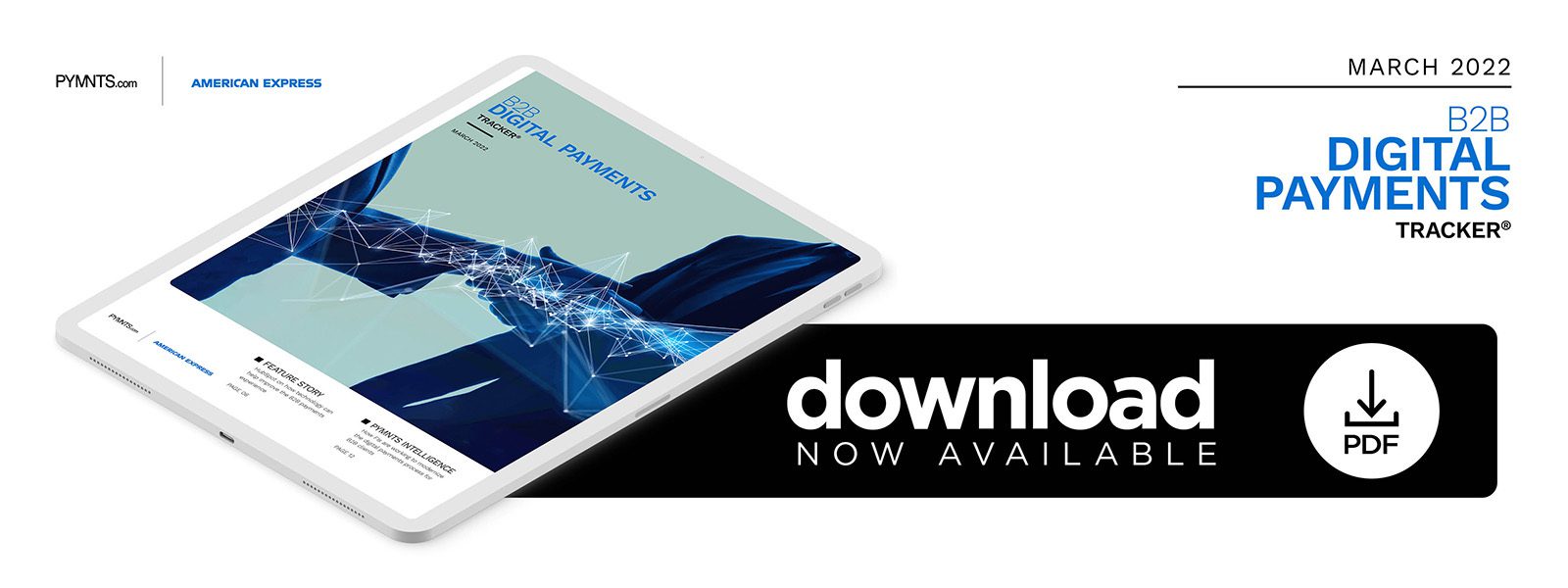PYMNTS Intelligence: Modernizing the Digital Payments Process for B2B Clients

Although many businesses provide agile and secure payment methods for consumers, the pandemic exposed significant discrepancies in their abilities to provide the same to B2B clients.
Consumer sites such as Amazon and DoorDash had already gained traction and could quickly adapt to serve an audience now choosing to avoid in-person shopping experiences. Yet, the same could not be said for B2B analogs, and B2B payments and purchases have lagged the consumer market in automation and speed. The proliferation of global ventures and cross-border businesses has raised the stakes, creating a pressing need to modernize B2B payments and streamline associated processes.
PYMNTS’ surveys of financial institutions (FIs) found that the pandemic intensified the friction their B2B clients experience managing invoicing and payments. FIs said their clients report numerous financial management pain points, including slow underwriting (15%), general invoice reconciliation (14%) and working capital management processes (11%). PYMNTS’ research also found that significant pain points chief financial officers (CFOs) experienced revolved around the need to improve cash flow management by digitizing accounts receivable (AR) and accounts payable (AP) systems.
To their credit, FIs recognize the need to meet these challenges. FIs accustomed to handling transactions in person or in hybrid interactions are aware of the need to offer business clients high-quality mobile and digital-first payment tools. However, an increased number of solutions for secure, convenient and simple facilitation tools have entered the space, yet the major pain points for B2B transactions have worsened in the past two years.
FIs must improve digital transformation efforts to meet their client needs or risk losing business to the smaller and nimbler FinTechs that continue to proliferate every year.
This month, PYMNTS looks at how FIs are working to improve their digital payment offerings for businesses of all sizes and how digital technologies and automation make B2B payments more flexible and help businesses better understand and serve customers.
How FIs Can Digitally Transform Alongside B2B Clients
What needs to change to ensure that FIs serve their corporate clients satisfactorily? FIs need to shed the old-school way of providing their services exclusively in person and meet their clients where they do business most — online or in digital channels on electronic devices. They should offer the digital features that consumers have become used to, including instant payments, refunds and embedded finance abilities.
PYMNTS’ research found five key digital features that FIs could add to their online experiences that would help alleviate their clients’ pain points. These are the ability to offer supplier portals and improve access and shareability for cash flow data and other critical data in real time. In addition, many organizations desire a simple and integrated AP and AR system, real-time cash flow management and easier payment integration with legacy systems, including enterprise resource planning (ERP) systems.
Unfortunately, FIs have been slow to respond. While two-thirds of FIs said they recognize the need for more digital features, just three out of 10 said they think their current digital offerings provide the tools their clients need. Businesses had transformed their B2B digital payments capabilities almost overnight during the pandemic, yet the share of B2B companies that make more than 90% of their payments electronically rose by just 12 percentage points, reaching approximately one-fourth of the total B2B payments value in 2020, according to one report.
Many of the world’s largest companies are looking to continue transforming their digital payment processes in the future — in turn, meeting their clients’ and vendors’ expectations. As a result, they want their FIs to not just help them with cash management but also serve as a business partner that can help them succeed. While many companies still use checks as a preferred way of payment, for instance, payments made with cards and other digital means continue to gain popularity. A survey of finance executives found that 64% intend to make more digital payments in the next year, and 32% of respondents have implemented some form of AP automation.
Digitizing AP and AR can create more efficient processes for customers and suppliers, facilitating repeat business, improved loyalty and positive reputations for the businesses that serve them. These businesses demand the same from their FIs. Offering easy-to-use and alternative payment methods can help provide early payments to vendors, cash flow transparency and better financial health overall.
There is no doubt that digital transformation among businesses will continue, and the most successful FIs will be the ones that anticipate these moves and transform with them. In some cases, the survival of the traditional FI depends on it.
